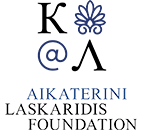Soldiers (158 Subjects)
The disposition of the Russian and Ottoman troops in the battle of Stănileşt during the Pruth campaign (1711). Ottoman officials conferring in their tent.
The disposition of the Russian army in the battle of Stănileşt during the Pruth campaign (1711). Portrait of the commanders of the troops, Peter I the Great of Russia and Vizier Baltacı Mehmet Pasha. Roman coins discovered in the area,
View of the temple of Rome and Augustus and the adjacent temple of Diana in Pula, Croatia. Between the two temples is situated the Communal Palace of Pula and the city prison. Next to the building, a guard and locals who are playing a game of marbles. In the middle ground, a soldier of Slavic ethnicity conversing with a young woman. On the left, a Polish woman with her donkey and small dog.
Persian officials take the most beautiful women of the city away to the harem of the shah of Persia.
Prince Mustafa assassinated in the campaign tent of his father, Suleiman I, who is present (on the left), encouraging moreover the assassinators.
View of Hebron. In the background the monument in Herodian architecture which houses the Cave of the Patriarchs, where Abraham, Sarah, Isaac, Rebecca, Jacob and Leah are buried. The Valley of Jericho. View of the Dead Sea.
The Greek Parliament (former royal palace). In the background Mount Lycabettus. On the right Mount Hymettus.
Frontispiece: Map of Heraklion. Allegoric scene: Venice and the Ottoman Empire as warriors. Scene from the Ottoman siege of Candia.
Illustration for the poem of Lord Byron "The Prisoner of Chillon": The Chillon Castle on the shores of Lake Leman in Switzerland.
The march of the Sultan from the Palace to the mosque on the day of Bayram. Frontispiece of the first volume: The march of Ottoman officials.
The march of the Sultan from the Palace to the mosque on the day of Bayram. Frontispiece of the second volume: The departure of the Sultan from the Palace.
Composition of scenes from the rise and fall of Sabbatai Zevi, the rabi who claimed to be the Messiah of the Jews until he was forced to convert to Islam by the Ottoman Sultan (17th century). Sabbatai Zevi claims to be the Messiah. Sabbatai Zevi enthroned by his followers. Ottoman soldiers arrest Sabbatai Zevi in the Dardanelles. From: J. Chr. Wagner, Delineatio Provinciarum Pannoniae et Imperii Turcici in Oriente, Augsburg, 1684.































